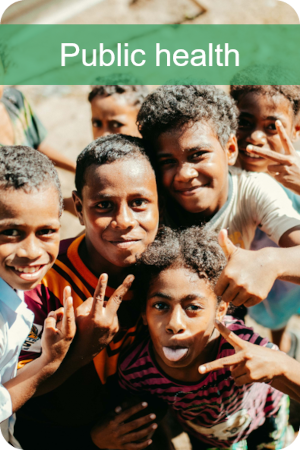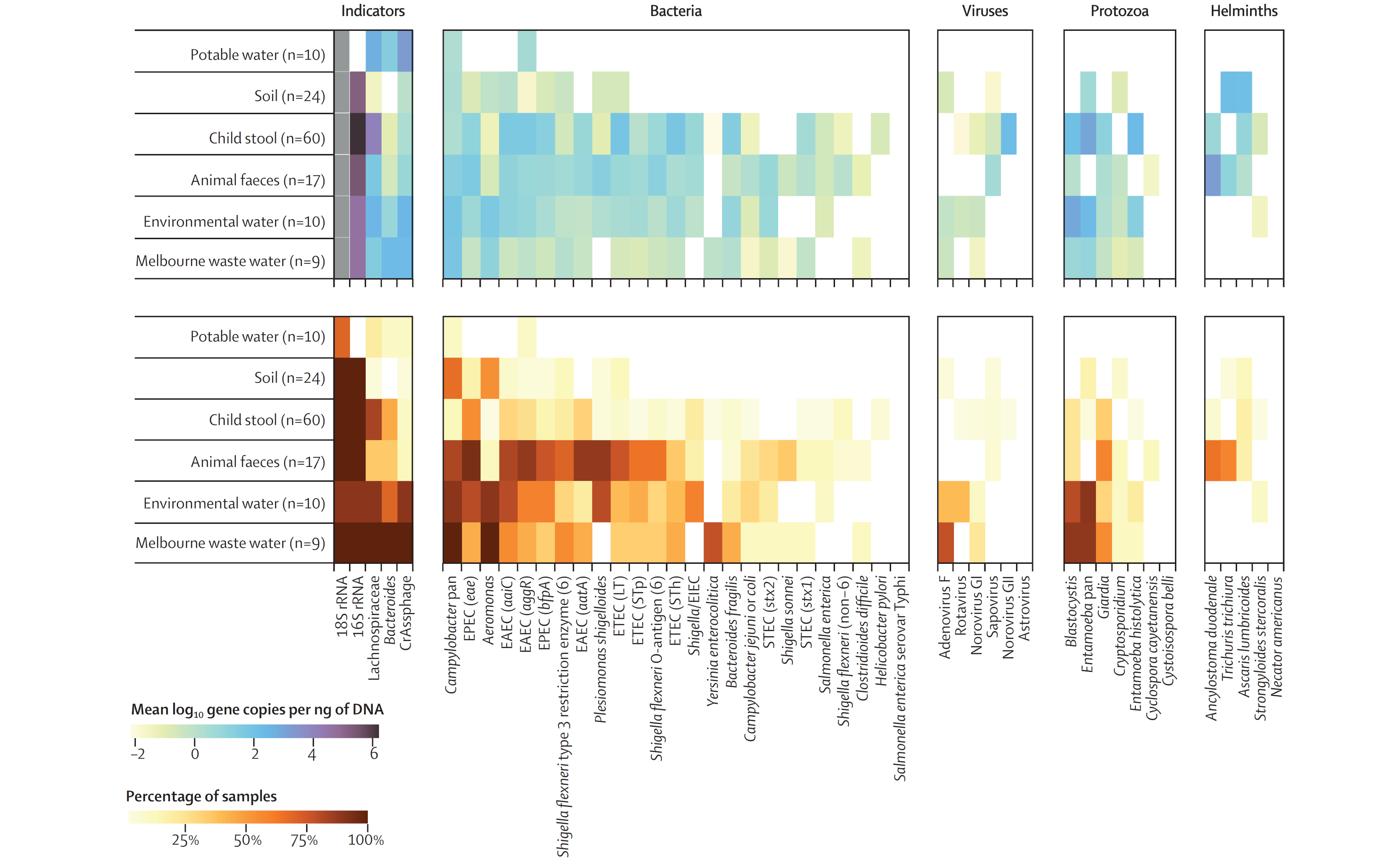 INFORMING INTERVENTIONS TO REDUCE PATHOGENS AND AMR
INFORMING INTERVENTIONS TO REDUCE PATHOGENS AND AMR
Pathogen and antimicrobial resistance (AMR) levels are devastatingly high in regions with inadequate water, sanitation, and hygiene (WASH). Approximately 1.7 billion cases and 1.6 million deaths of diarrhoeal disease occur each year, with a disproportionate burden in children under five. A ‘one health’ approach is urgently needed to address this tragedy; through studying the relationships between environmental and human health, it is possible to develop scalable built interventions to reduce pathogen and AMR transmission.
We are working closely with Asia-Pacific communities within transdisciplinary research teams to deploy unified monitoring approaches, resolve transmission pathways, and develop scalable interventions to improve environmental conditions and human health.
Major projects
1. RISE: Revitalising Informal Settlements and their Environments (Wellcome Trust, 2017 – 2024)
2. Unifying frameworks and methods to monitor pathogens and AMR across ‘one health’ reservoirs (Centre to Impact AMR Project)
3. Resolving exposure pathways for gastrointestinal pathogens and AMR in low income countries (NHMRC Project Grant, 2021 – 2025)
4. Gastrointestinal hydrogen metabolism: a neglected driver of human health and disease (new project)
Research team
Staff: Dr Rachael Lappan (postdoc), Dr Laura Perlaza-Jimenez (postdoc), Tent Jirapanjawat (research assistant)
Students: Caitlin Welsh (PhD)
Collaborators: Prof Trevor Lithgow, Prof Steven Chown, Prof Karin Leder, Prof Rex Gaskins, Dr Patricia Wolfe, Prof Dena Lyras, Dr Sam Forster, A/Prof David McCarthy, Dr Rebekah Henry, Prof Rebekah Brown, Prof Tony Wong, Prof Steve Luby, Prof Diego Ramirez-Lovering
Previous findings
Through RISE in Fiji and the Centre to Impact AMR in Melbourne, we have developed unified molecular approaches to monitor multiple pathogens and AMR genes across host and environmental reservoirs. For example, we have shown TaqMan array cards can quantify broad panels of diarrhoeal pathogens (bacteria, viruses, protists, helminths) across different samples (stool, animal scats, waters, soils, sewage) (Lancet Planetary Health 2021, BMJ Open 2021). In turn, this technology allows tracing of transmission pathways and assessing interventions.

Figure: Example of our work on pathogen monitoring. Here we used TaqMan array cards to quantify enteric pathogen levels across 130 samples. This revealed a high enteric pathogen load in child stool and environmental waters from informal settlements in Fiji (Lancet Planetary Health 2021).
In other work, we have shown that colonic hydrogen metabolism is a surprisingly widespread process among both commensal and pathogenic bacteria (ISME J 2016, Gut Microbes 2016, MMBR 2020). This has laid the foundations for multiple other projects in this space to understand hydrogen homeostasis in gastrointestinal health, disease, and disorders.